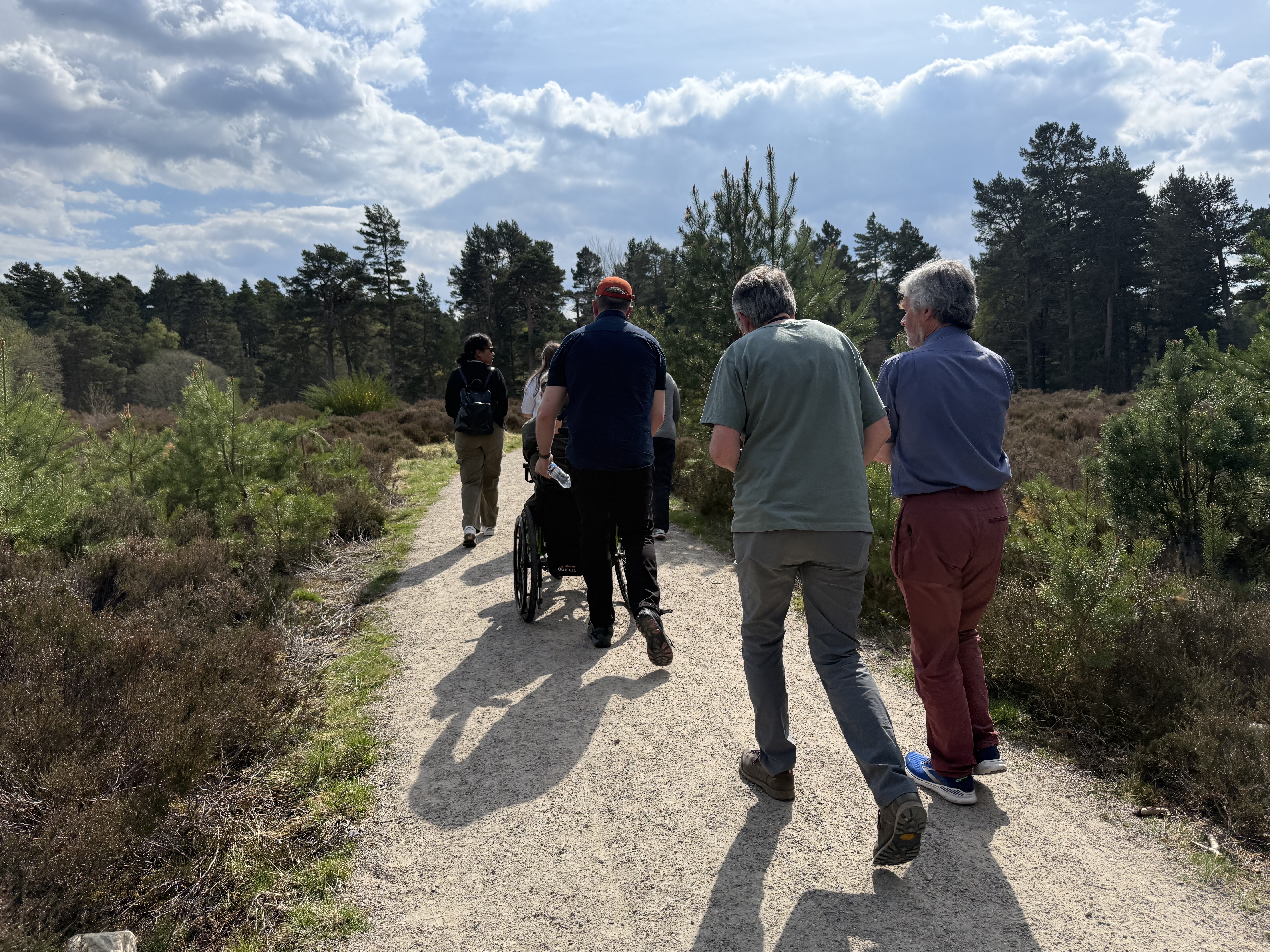
‘Their success in engaging the community was what struck me’: Cross-community learning at Anagach Woods, Scotland
On a bright spring day at the end of April, a group representing the Murray Park Living Lab and members of the Hutton COEVOLVERS team travelled across the Cairngorms for a meeting of minds with representatives from the Anagach Woods Trust, in Grantown-on-Spey. The group were welcomed with home-baked hospitality and seated on hand-crafted benches made by the Trust team and volunteers with felled-trees from the woodland.
The interactive meeting was split into two parts – first, a group discussion, seated outside the community curling hut, followed by a guided walk through the trees, bringing to life elements discussed in the group and the character and life represented by the woodland. The theme of the meeting was ‘what can we learn from each other?’ and an open, honest, and reciprocal dialogue and appreciation of the value brought by others was evident throughout.
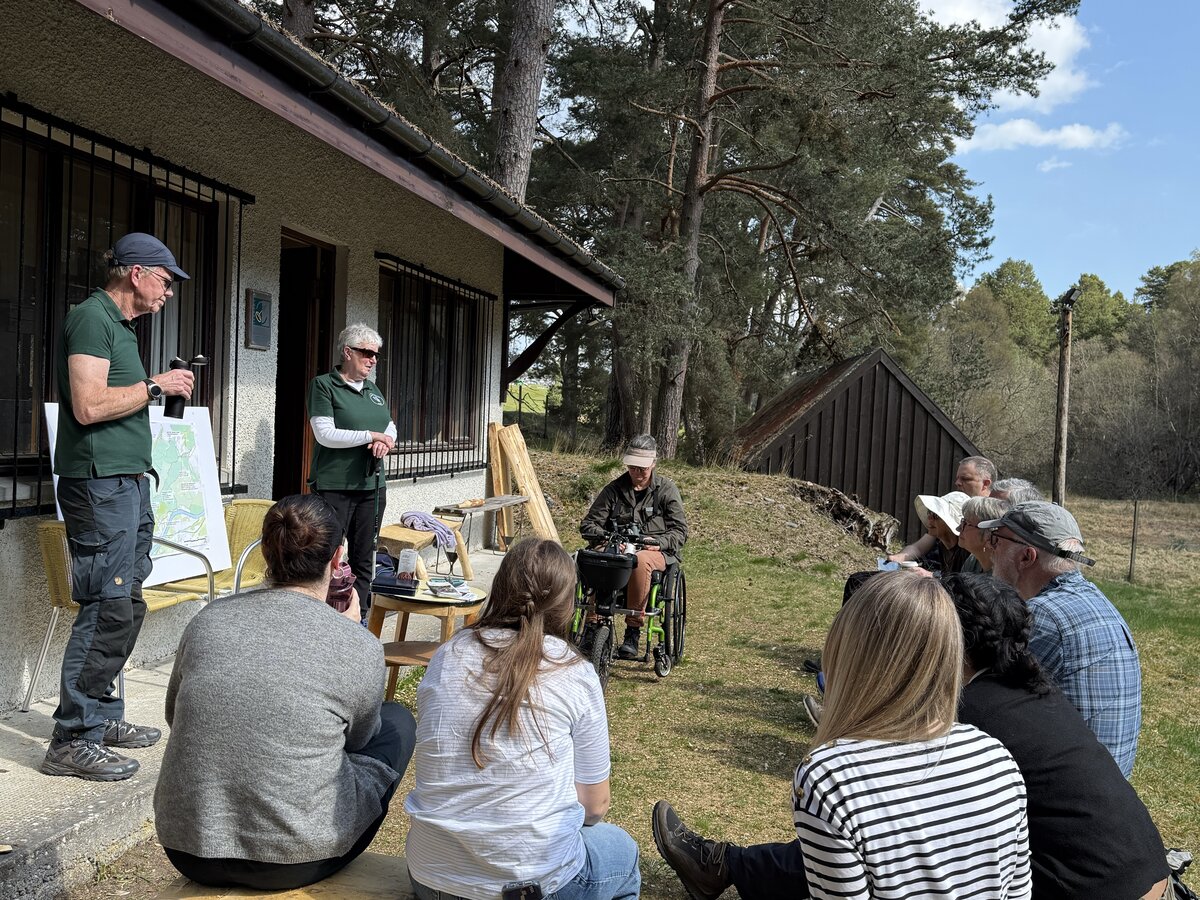
Acquisition, ownership, and governance
Managing a community-owned woodland represents a meaningful commitment to people and place, exemplified vividly in the discussion between trustees from Anagach and Murray Park. Together the hosts from Anagach told a story of acquisition from a large estate in 2002, reflecting on periods of difficulty and success over the last two decades, culminating in the present where the Trust comprises eleven individuals from across the generations and different walks of life. Trust members epitomise the value of complementary skillsets and life experiences, exemplified in discussions relating to legal, financial, and marketing elements required to manage an area of unique character and significance to the local community.
Both groups’ organisational journey towards becoming a ‘SCIO’ (Scottish Charitable Incorporated Organisation) was also enthusiastically discussed, from process to structure and benefits. In relation to this, the importance of succession planning also was clear, from the deliberate pursuit of younger committee members (the youngest currently being 28 years old) to the relationship between Trust and local school, which was illustrated perfectly by the sight and sounds of children undertaking learning in the woodland nearby. In their reflections of the day, the Murray Park group identified this outward-facing character and acknowledgement of young people’s position, role, and potential alongside other older demographics (representing time and experience) as key learning.
Volunteer programme
Perhaps the most visible example of community integration to the mission and working at Anagach Woods, is the programme of volunteering opportunities made available to members of the public. These were described to the visiting group during the initial discussion at the curling hut and observable through posters displayed strategically at access points to woodland paths.
Members of the public have been identified by the Trust as a key resource in the context of woodland management and experiential values associated with participation (social interaction, skills development) are also promoted, highlighting the reciprocal benefits to people and place.
Regular volunteering sessions are held each month around three themes: nature restoration; path and sign maintenance; and woodworking. Specific tasks are dictated by need and time of year, but include assignments such as tree ringing, non-native seedling removal, creation of wildlife ponds and fire mitigation, path repair and drainage, litter collecting, cutting back overhanging branches on paths, and building benches/way-markers, etc., offered via an online booking system.
The use of QR codes to encourage sign-up and use of language such as ‘your woods’ were commended by the visiting group as effective ways of capturing interest, signifying community ownership, and engendering a sense of responsibility in maintaining the woods and public access. Interestingly, the approach taken by the Trust also provides an alternative option for individuals to donate via a QR code link, giving community members a sense of agency in terms of their physical or monetary contribution to the woods based on individual circumstances.
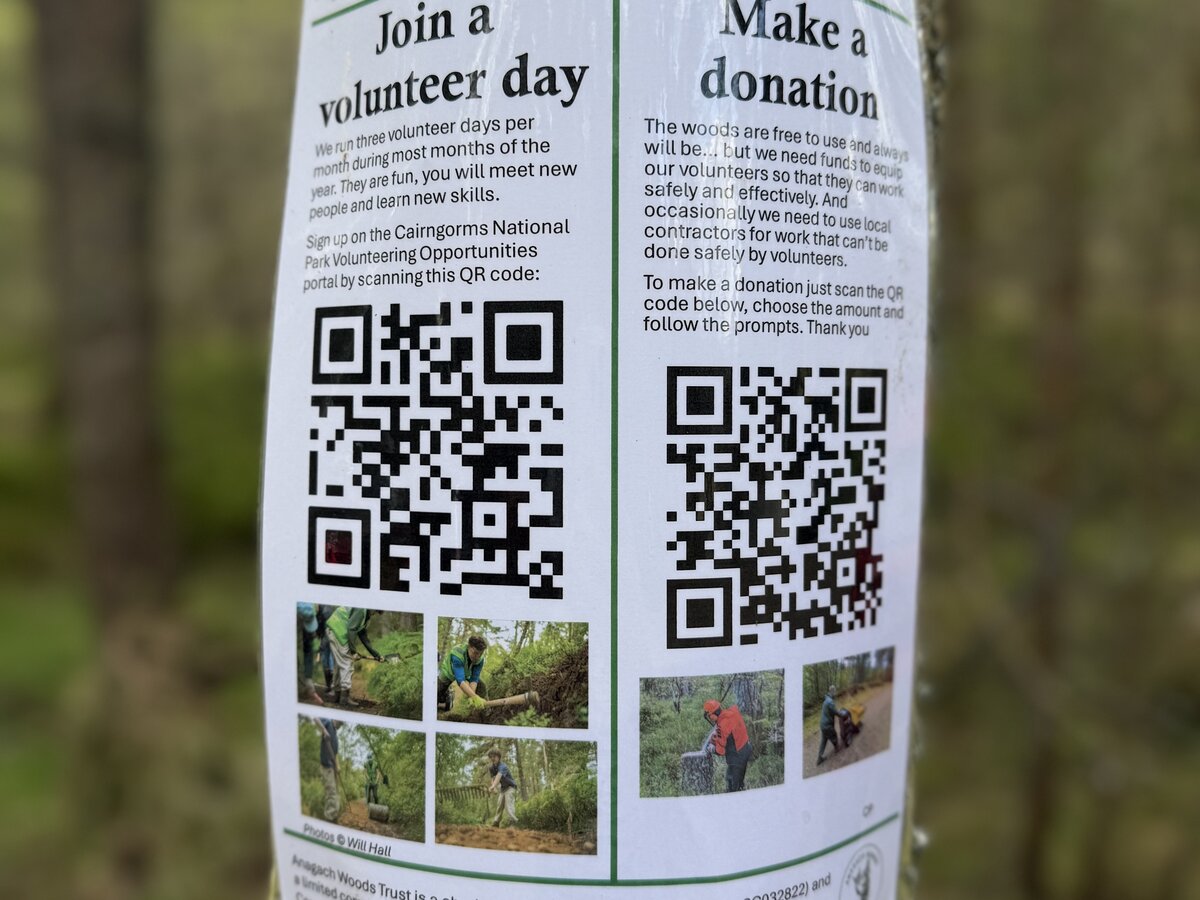
People and nature
Venturing out into the woods led by a knowledgeable host, elements of nature restoration and place management introduced in the earlier group discussion were presented. Discussions of accessibility, including car parking and wheelchair access, demonstrated the balance between serving the needs of the woodland and encouraging public enjoyment of natural spaces in a responsible and equitable manner. Observations that the woods are ‘clearly a very well used and much-loved place’ were made, including reference to the decision not to provide litter bins, instead encouraging visitors to take their litter away to be disposed of at home.
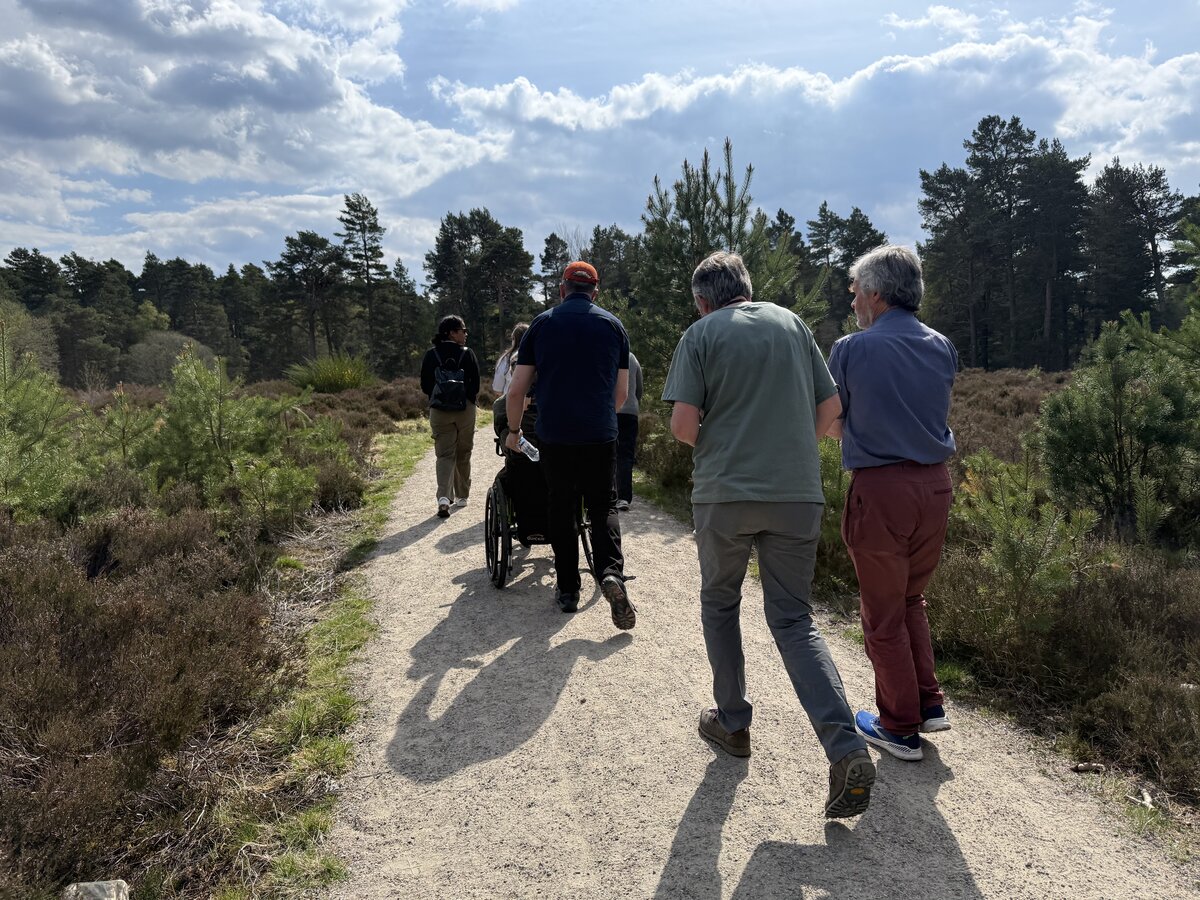
Various priorities and features were pointed out to the group, including management of non-native species, concern for wildfires, and reversing the impacts of historical decision-making and practices. Water management was one of the focal topics, shown through various features, including work being undertaken to raise the water table by blocking or reconfiguring old drainage burns, and creation of wetland areas to support a rich variety of life, such as amphibians, insects and plant species that depend on wetter conditions.
Volunteers engaged in the restoration of the water channels reported discovering an eel in one of the water features. This unexpected finding may serve as an indicator of the ecological connectivity between the woodland’s waterways and burns, suggesting a more extensive and dynamic aquatic network than previously assumed.
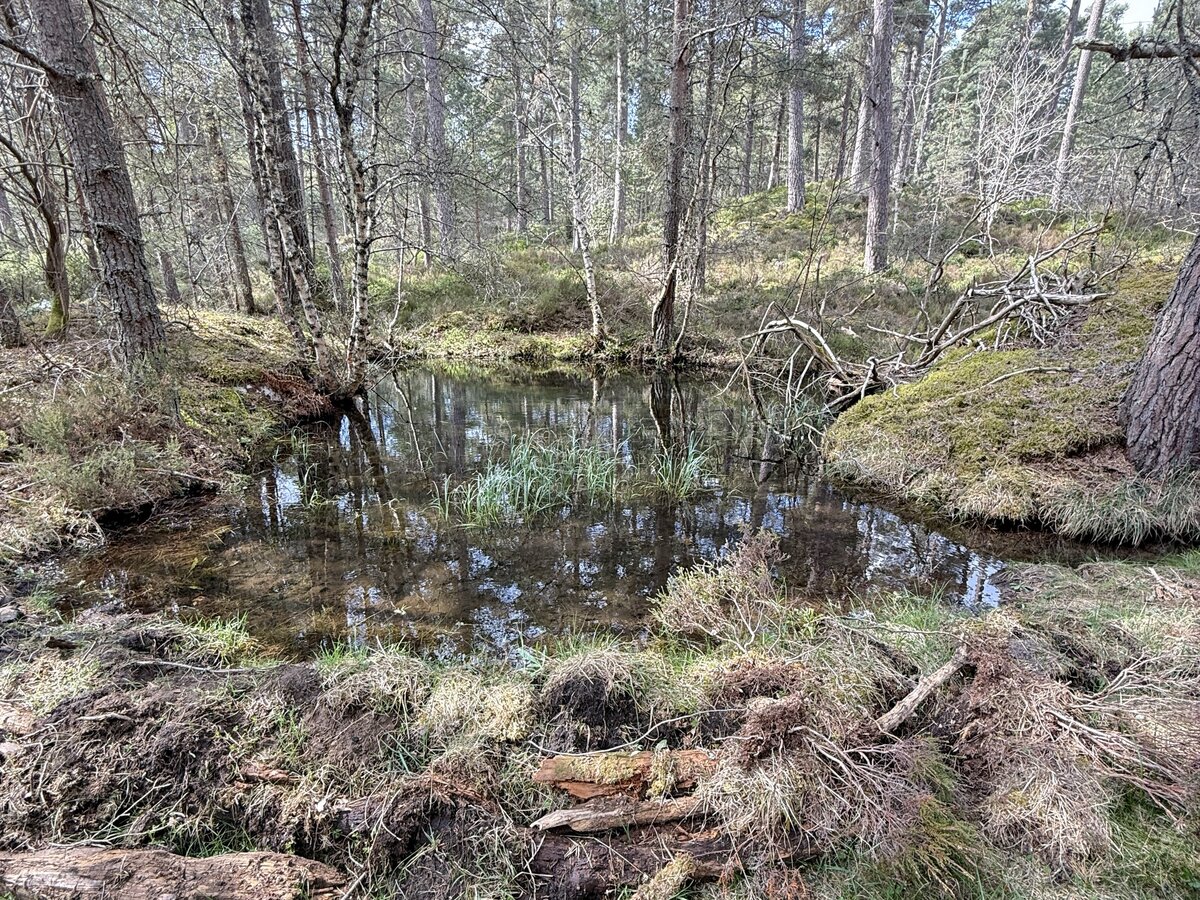
Another important aspect of water management involves the so-called "fire ponds" within the woodland. These were originally constructed to provide a water source for firefighting, based on past advice from the Fire Service. They were fenced off with wire, which the community group describes as visually unappealing. The group has since removed the fencing and widened the ponds While they no longer serve a fire-related purpose, these spaces now offer an opportunity to create affordances for water-based ecosystems.
Peer-to peer learning
Reflections by the Murray Park Living Lab and Hutton research team report an enjoyable and insightful visit, hosted by a welcoming and powerful advocate for custodianship, community interaction, and human-nature connection in the context of nature-based solutions. Reciprocal learning occasioned new information to be taken forward in the context of the respective journeys of each group, while also ensuring respect for the nature and character of each place. Discussions also resulted in a sense of confirmation and reassurance in existing practices and decision-making. The prospect of a return visit to Murray Park reflects the success of the initial engagement, affirming the connections forged between community groups and helping to build lasting social capital.